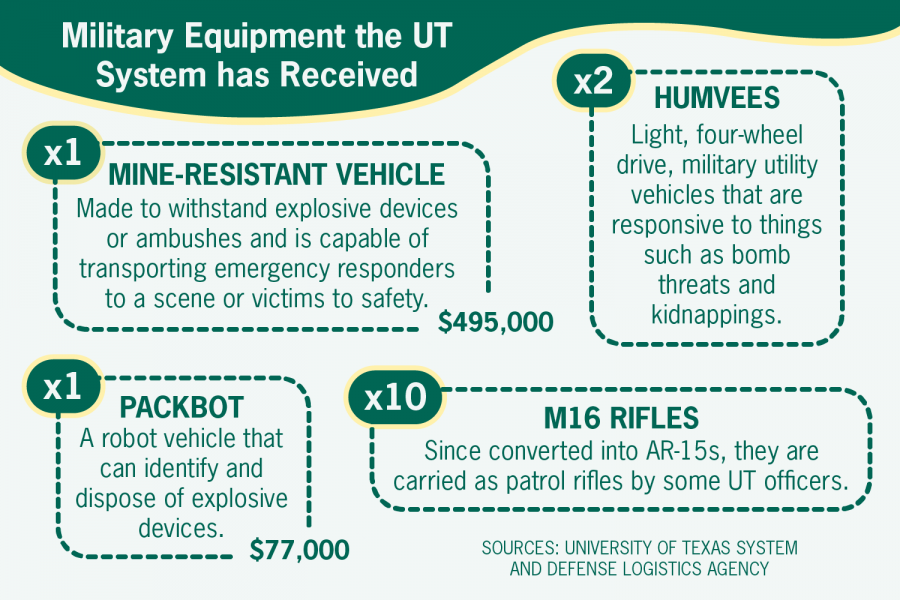UT System continues to support with military despite student calls to divest
April 23, 2021
Editor’s Note: This article first appeared in the April 20 issue of The Daily Texan.
The UT System has received equipment from the Department of Defense for 10 years through the 1033 Program, which gives leftover equipment to law enforcement.
The UT System received equipment valued at over $572,000 from the Department of Defense between 2015 and 2020, according to data from the Defense Logistics Agency. The cost is attributed to two items: a mine-resistant ambush protected vehicle and a PackBot, a robot which is typically used for surveillance, according to Michael Heidingsfield, director of police for the UT System.
Heidingsfield said the UT System has also received two Humvees; ten M16 rifles, which have now been converted to AR-15s; and rifle sights, in case of an active shooter or other emergency situation. Heidingsfield said these items “would never be used for crowd control during a protest.”
“These types of weaponry are intended to serve policing, both in the states and in nations ravaged by US imperialism,” said Kaya Epstein, student organizer with Coalition for UT Divest. “I think the knowledge that UT has ‘emergency’ military gear would be extremely scary to a lot of students, especially those of color, because there’s no guarantee that equipment won’t be used against (them).”
Heidingsfield said the Humvees were deployed twice: once in response to a kidnapping of a student at what was then UT Pan American and once in response to a bomb threat at UT Brownsville. He said the mine-resistant vehicle was used during Hurricane Harvey to transport critical care staff to the hospital.
On April 9, UT-Austin held an in-person event that showcased U.S. military technology developments, including some technology developed with UT research. During the event, UT President Jay Hartzell said the University has a long history of supporting the military.
According to a 2015 study done by Vice, UT-Austin was ranked 45 out of 100 for the most militarized universities in America, with Department of Defense research and development funding of $124,334,000. In 2017, the University received a $1.1 billion contract from the Department of Defense to conduct research and development to improve U.S. national security.
Kathy Barker, a clinical assistant professor at the University of Washington and a contributing author to the book “Preventing War and Promoting Peace: A Guide for Health Professionals,” said change and influence come from students and faculty, not administrators.
“I think students can do a lot, they can protest, they can write letters, they can do articles,” Barker said. “Protests and speaking out are at least the start.”











